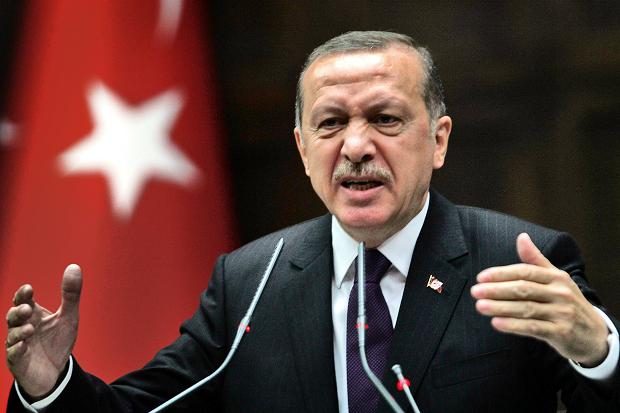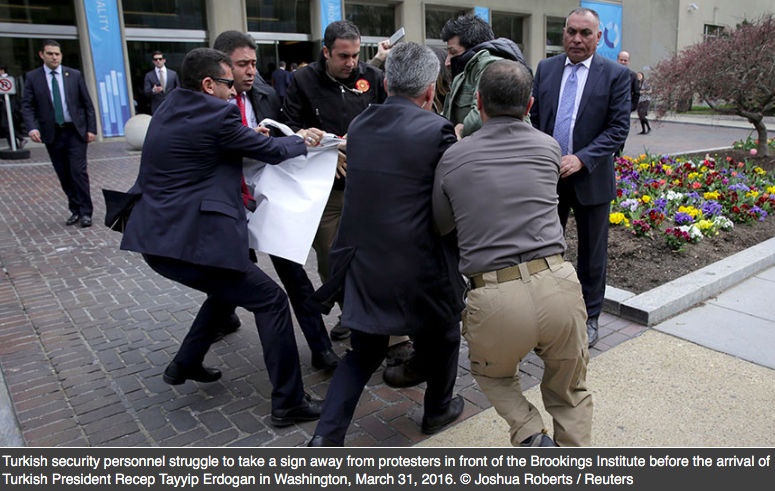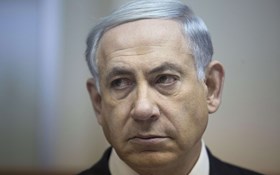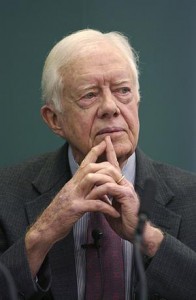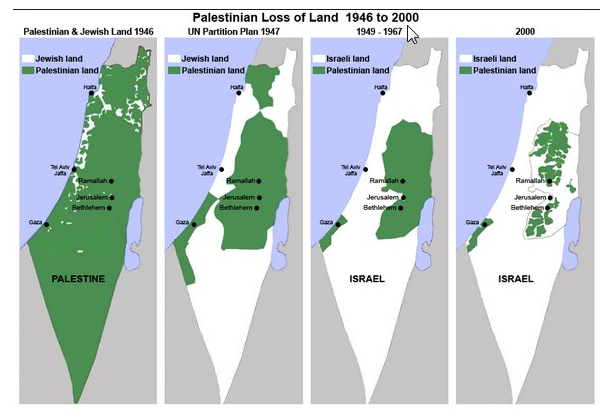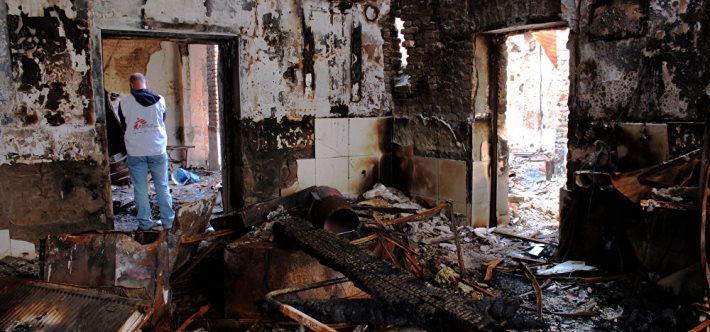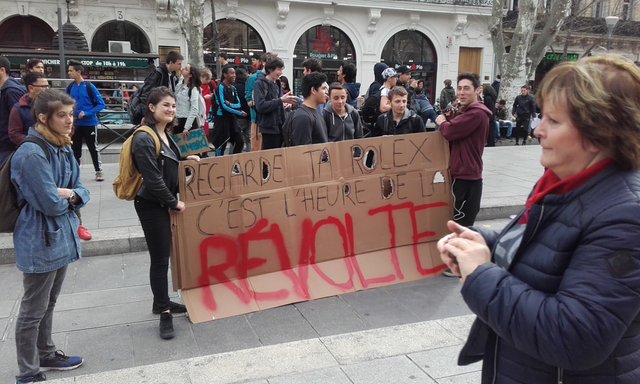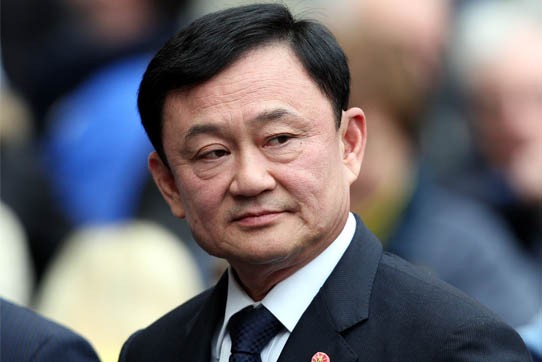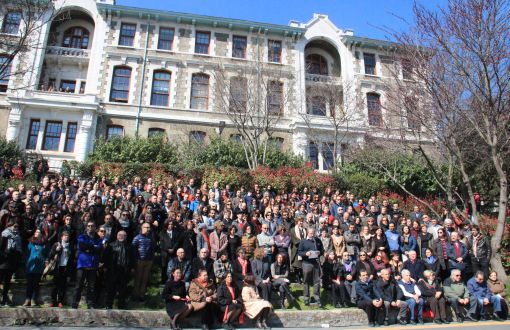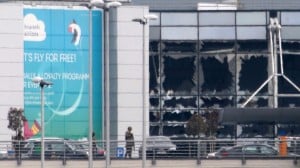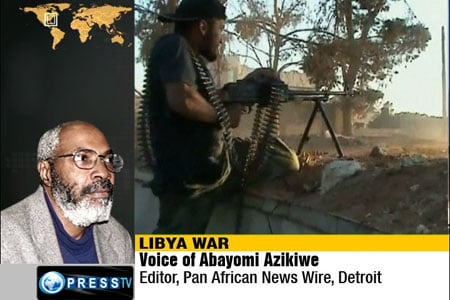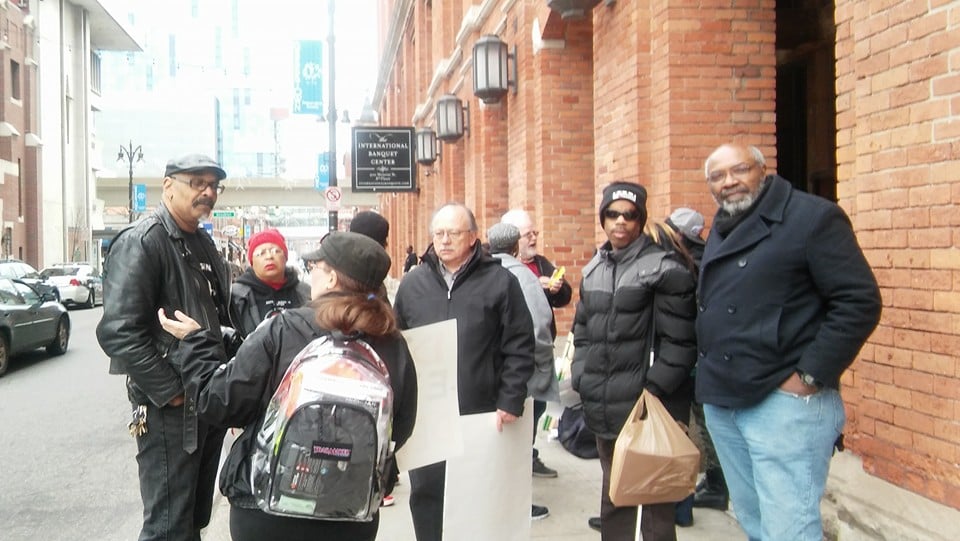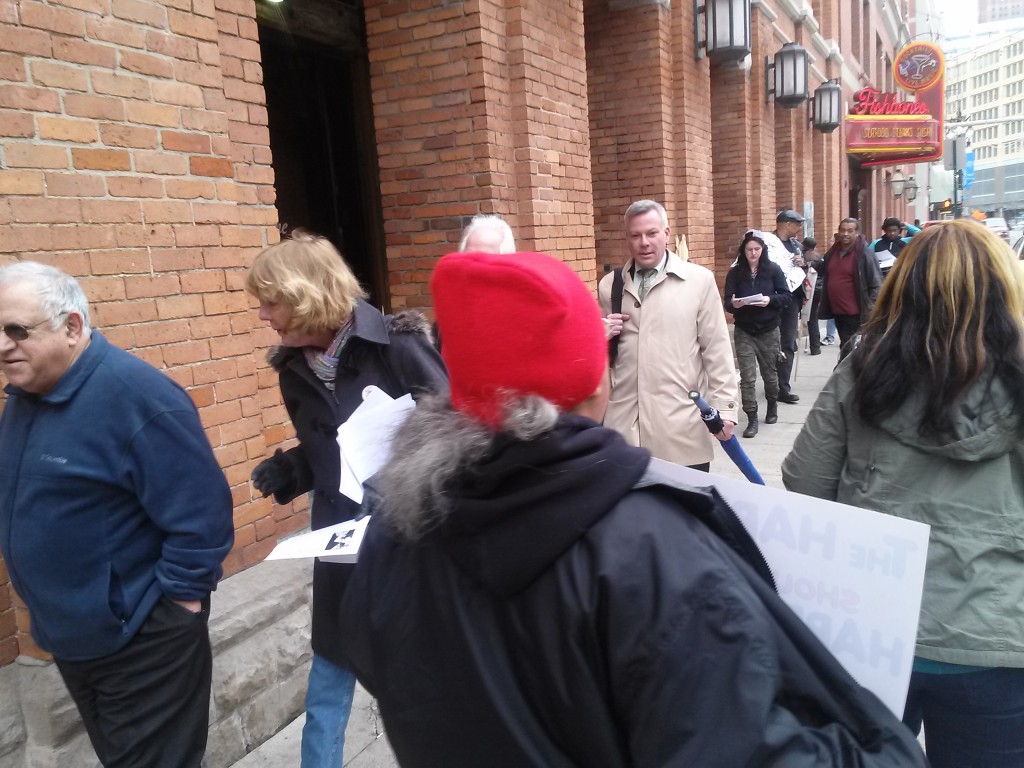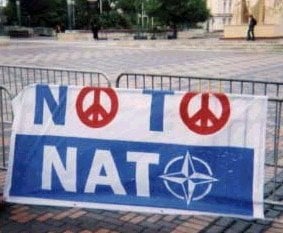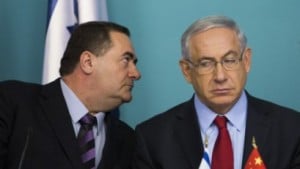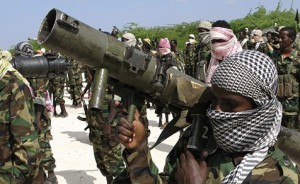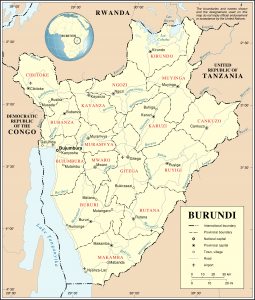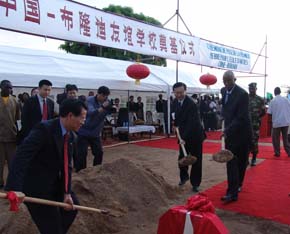The majority of studies on regional formation in East Asia (both Northeast and Southeast Asia) have focused on economic integration and institutional build-up initiated by states. Developments in the field of contemporary society and culture, however, have been largely overlooked. This study seeks to shed light on the way popular culture influences our perception of regions by examining some recent developments in the study of translational dissemination of popular culture across Asian societies. The paper argues that popular culture plays a constructive role in shaping the East Asian region by creating transnational markets for cultural commodities and by disseminating communalities of lifestyles and concepts, which are based on the experience of consuming the same cultural products by different people in different parts of East Asia.
Introduction
East Asia1 in the last two decades has experienced a cultural renaissance rooted in economic growth and booming urban consumerism, and manifested in the dense circulation of popular culture products, such as movies, pop music, animation, comics, television programs, and fashion magazines, not to mention their derivative products such as games, food, toys, accessories, etc. The “Korean Wave,” better known as “Hallyu“, which is the focus of this special issue, constitutes an important part of these developments. While many of these popular culture confluences and “waves” originated in Europe and the United States, a significant proportion is now produced and disseminated locally or within the Asian region. Confluences of Korean, Japanese and popular cultures, in particular, have not only intensified in recent decades, reaching consumers of different national and linguistic boundaries, but have also inspired a variety of transnational popular-culture collaborations and co-productions involving creative personnel from different parts of Asia. The result is that in virtually every big city in East Asia, it is possible to find a variety of imported popular cultural products that are regularly disseminated, indigenized, hybridized, and consumed.
Some of these dramatic developments in East Asia’s popular culture market have been well-documented and analyzed, especially in anthropology and cultural studies. This literature provides substantial testimony for the proliferation of the various popular culture confluences and contains rich information and analysis relating to the practices and “meanings” of popular culture in an age of globalization. These studies have focused mainly on the representational and ideological aspects of popular culture, in particular the consumption/reception of, say, Korean TV dramas, Japanese anime or a Hong Kong-made movie. The overwhelming majority of the studies, many of them employing a close reading of media-as-texts, do this kind of analysis (Otmazgin 2008. Recent examples include Allen and Sakamoto 2006; Fitzsimmons and Lent 2013; Fung 2013; and Iwabuchi 2004).
Curiously, however, none of these studies of popular culture have been incorporated into political science, economics, and geography disciplines, especially in relation to the processes of region making. Very few studies have actually looked at the constructive role played by networks and mechanisms of distribution and consumption of popular culture in East Asia, or examined the cultural linkages they facilitate between communities across this region (Otmazgin 2013: 3). While issues related to the impact of trade, finance, industry and technology on creating an integrated region in East Asia have been extensively analyzed in the available literature, popular culture has not.
Given the long history of dissemination of popular culture across the region, and the more recent state policy regarding it and the development of major media alliances, why has culture barely figured in the critical discussion on region-making? While ASEAN (The Association of Southeast Asian Nations), for example, has emerged as a hub of East Asian community- building, and to some extent norm-setting, its cultural impact as far as popular culture is concerned has been far less visible. Why so? Given that a large number of people in East Asia spend many hours every day in front of their television screens, go to movies, listen to music, and generally spend more time than before on cultural consumption, can’t we assume that these practices have an impact on their lives and perceptions of other places? Perhaps they introduce new images and options and create new social and symbolic references? To use international relations scholar Andrew Hurrel’s term (1994: 65), can we think of popular culture, including practices and discourses about popular culture, as creating a sense of “we-ness”?
In the case of East Asia, the dense circulation of popular culture plays a constructive role in shaping the way people perceive a “region.” This circulation has an impact not only on the institutional aspect of regional formation, e.g. the creation of transnational markets and the consequential collaboration between all those involved in this process (companies, agents, promoters, distributors, retailers, etc.), but also on the dissemination of lifestyle commonalities and concepts, which are based on the experience of consuming the same cultural products by different people in different parts of East Asia. Popular culture consumption creates a special bond based on a shared experience between consumers. In this way, the circulation of popular culture puts East Asian fans, especially city residents, into a new cultural realm and invigorates a feeling of common-ness. This may suggest widening our understanding of a regional “community”-not only people of similar ethnic, national, or local belonging but a community of people from different locations who are exposed to the same cultural commodities and share the consequential perceptions, lifestyles and thoughts they offer. Specifically regarding Hallyu, this paper suggests that cultural consumption is creating a sense of community among fans in the sense that it serves as a shared language for transnational communication that enhances a sense of “we-ness” and, at least for some, eventually constitutes part of their identity.
What constitutes the “region” of East Asia?
According to Anthony Payne and Andrew Gamble’s (2004: 16) definition of regionalism, which is typical of the international relations (IR) approach to this term, “Regionalism is a state-led or states-led project designed to reorganize a particular regional space along defined economic and political lines.” Holly Wyatt-Walter (1995: 77) defines regionalism similarly, as “a conscious policy of states or sub-state regions to coordinate activities and arrangements in the greater region.” Regionalism thus refers to ideological and rhetorical concepts of regional institutionalization and regional identity. Regionalism also represents adeliberate attempt by states or their agents to create formal mechanisms for dealing with common issues in the pursuit of mutual benefits.
Regionalization, on the other hand, refers in this literature to an indirect and bottom-up process that increases the proximity between markets, institutions, and communities, in geographical and conceptual domains broader than two states.
The majority of studies of region-making in East Asia have concentrated on the process of building regional institutions through trade mechanisms and regime build-up initiated by national governments (Liu and Régnier 2003; Yoshimatsu 2008: 24). Others argue that “regional dynamism” and cross-border economic activities, more than formal agreements between governments or a shared historical or cultural “Asian” background, have promoted formation of the region (for example, Buzan 1998; Frost 2008; Funabashi 1993; Harvie, Kimura, and Lee 2005; and Pempel 2005). This sort of market-led regional dynamism continues despite an obvious lack of strong regional institutionalization in East Asia-especially when compared to the EU. (Katzenstein 2005).
However, the construction of regions is not only the result of economic dynamism and state-led initiatives, but also other processes emerging from populations within a certain geographical area (Hettne 2005: 548). Cultural anthropologist Arjun Appadurai challenges the theoretical understanding of regional formation, arguing that the concept of the region is not based on any “natural” formation and that there is no way that regions should be defined. According to him, “the large regions that dominate our current maps for area studies are not permanent geographical facts[…]Regions are best viewed as initial contexts for themes that generate variable geographies, rather than as fixed geographies marked by pre-given themes” (Appadurai, 2000: 7). In this sense, academic interaction is important to “hav[ing] elaborated interests and capabilities in constructing world pictures whose very interaction affects global processes” (Ibid: 13). Here Appadurai conveys the idea of regional formation being a matter of attribute emanating from social and cultural interactions and not by state actors or economic activity. Although Appadurai does not clearly explain how regions should be defined, his vision is far-reaching in the challenge he presents to the theoretical literature.
The study of regional formation in East Asia thus requires a methodological and interdisciplinary pluralism that considers a variety of possible regionalizing factors, including new definitions for regions. As contested by Peter J. Katzenstein, “geographic designations are not “real”, “natural”, or “essential”, but are “socially constructed and politically contested and thus open to change” (Katzenstein, 1997: 7). In the following paragraphs I suggest that popular culture is one such force, nested within other factors and processes, which shape the way the East Asian region is being appropriated and perceived.
Popular culture and region-making
Looking at the regional flow of popular culture in East Asia, especially in cities, may advance our empirical and theoretical understanding of how regionalization actually works and more basically what constitutes a “region.” For one thing, it overturns conventional wisdom on who the driving forces and actors of integration are, showing that regionalization rather than regionalism is a superior concept for understanding this part of the world. Such investigation redirects one’s attention away from the state and highly institutionalized arrangements and looks instead at the more dispersed agency involved in the creation and marketing of culturally oriented commodities. Examining the actual operations and networks which drive the dissemination and consumption of popular culture not only reveals the bottom-up logic of regionalization, but also illuminates the actual practices and processes of regionalism. It shows the collaboration and interlinking of companies, the creation of transnational cultural platforms, the distribution of products, and the (belated) policy initiatives of governments.

Image: The culture of consumerism in East Asian cities
Secondly, popular culture play a constructive role in pulling people closer together by providing them with a shared experience invigorated by the consumption of cultural commodities. The commodification, production, marketing, pirating, and consumption of popular cultures first encourage collaborations between companies and individuals involved in these processes. Moreover, these activities also construct new frameworks for delivering images, ideas, and emotions, which can invigorate feelings of proximity and belonging. In a free-market economy, dense (and often uncontrolled) circulation of popular culture has the potential to weaken individual states’ control over the inflow of culture and hamper their efforts to utilize culture for their own purposes, such as nation-building. In other words, it creates a new sort of community that stretches beyond the reach of the state and may challenge it. The spread of popular culture help people in East Asia to develop a common language made up of the same sounds, images, and texts available through music and smartphones, TV and movie screens, in comic publications, on commercial billboards, or via the Internet. These commodities and images do not have to be uniquely East Asian, as long as they are shared by wide segments of the East Asian population.

Image: Asian pop music in a Music Shop in Hong Kong
Third, the growing involvement of a few states in East Asia in the media and cultural industries has intensified the inner-regional flow of popular culture. Following the commercial success of these industries, the governments of South Korea, Japan, and China now see popular cultural products as both a profitable economic sector and a means to attain “soft power.” Recent initiatives by these governments indicate that they actively intervene in order to foster the growth of this sector within their national economies and are developing their own export-oriented cultural industries for specific purposes (Otmazgin 2011). In Japan, for example, no fewer than thirteen governmental ministries and agencies are in one way or another involved in promoting the so-called “content industries” (Zykas 2011). A recent example is the establishment in July 2011 of the Creative Industries Division within the Ministry of Economy, Trade and Industry (METI), to supervise the promotion of “cool” Japan abroad and assist Japanese small and midsize culture-related firms develop a global strategy. In South Korea, the government is promoting the country’s “creative industries” (music, movies, television etc.) as an export industry by investing in infrastructure and sponsoring promotional campaigns abroad (Shim 2008: 30). According to Korea Finance Corporation, in 2012 the Korean game industry’s exports reached US$2.6 billion, the music industry exported US$235 million, while exports of TV shows and Korean dramas reached US$234 million and movies were about US$ 20 million (Ha 2014). In China, following the country’s entry into the World Trade Organization (WTO) in 2001, the state has permitted foreign companies to own up to 49 percent of film companies, which has helped open the market and initiate new productions (Su 2014). These all are expected to boost popular culture production in East Asia even further and increase governmental involvement. Let us look next at East Asia’s popular culture market more closely.
The regionalization of taste
In East Asia, as in other parts of the world, American popular culture continues to loom over the markets. American products are successfully marketed in most places where local income levels have reached a certain standard. However, in spite of the global projection of America’s cultural power, regional popular culture confluences have also developed and intensified, substantially decentralizing the world’s cultural structure and refuting the notion that East Asia’s popular culture scene will continue to be dominated by American or Western cultures. Most visible are Chinese, Japanese, and of course Hallyu, which have reached global audiences in Europe, North and South America, and even the Middle East. Their greatest visibility and impact still remains within the cultural geography of East Asia (Lent and Fitzsimmons 2012; Fung 2013).
The growth in intra-regional trade and consumption of popular culture in East Asia is related to several socio-cultural and technological changes. These include the emergence of a large pool of middle-class consumers who have time and money to spend, the advent of social media where cultural content is delivered and consumed almost instantly, the dissemination of accessible devices for consuming popular culture such as DVD players and smart phones, and the easing of political control over the importation of culture as part of neo-liberal policies toward the media industries (Chua 2000; Jin 2007; Otmazgin and Ben-Ari 2012). These have all encouraged entrepreneurs, as well as the popular culture industries and their promoters, to seek new expansion opportunities beyond their immediate domestic market.
Chinese popular culture, now freed from the totalitarian understanding of culture and the arts and its complete subjection to the desires of the Chinese Communist Party, has been flourishing, not only in Mainland Chinabut also along China’s economic sphere in other parts of Asia. China’s economic ties with the rest of East Asia provide the infrastructure for the spread of Chinese popular culture as well. In turn, the feedback from Asian audiences encourages cultural creativity in China and convinces the Chinese industries to look beyond their immediate domestic audiences. The culture and entertainment sections of local newspapers in Singapore, Bangkok, and Manila constantly depict Chinese music, TV, and movie artists, making Pan-Asian Chinese pop culture a reality. The fact that the non-China Chinese popular culture is sometimes glitzier and more fluid, makes it popular among Chinese in China and eventually contributes to the melding of transnational Chinese audiences from different parts of East Asia.
Beijing, Shanghai, Hong Kong, and Taipei have evolved as incubator sites for Chinese cultural production, especially in animation, digital television, and video games, in spite of the state censorship that still sometimes interferes. Chinese pop music, in both Mandarin and Cantonese, is increasingly popular among young Chinese audiences in East Asia. Taiwan has recently replaced Hong Kong as the regional hub of Mandarin-language pop and is the source of approximately 80 percent of sales of Mandarin music. China’s young generation of movie directors is producing a wide range of films dealing with social issues related to contemporary Chinese society. For example, many movies deal with China’s Cultural Revolution in a way that leaves no doubt as to the critical way they see this period (Tobari 2007). The Chinese comic-book industry (manhua) initially absorbed many influences from Japanese manga starting as far back as the 1960s, but has recently been developing its own recognizable identity away from the Japanese model (Berndt 2012). In 1993, the first Chinese manga magazine was launched (manga taisho/ manga king), which included not only manga translated from Japanese but also original stories by young Chinese manga artists (Seno 2007: 115-116). This new creativity is expressed not only in a wide range of movie, anime, TV and comic-book productions but also in urban theater shows dealing with contemporary social issues, as well as contemporary arts and avant garde culture in urban studios, such as 798 art village in Beijing. These processes create a sort of Chinese popular culture language regionalism that encompass different parts of East Asia.

Image: Japanese fashion magazines sold in Hong Kong
Japanese cultural products are widely distributed throughout East Asia. During the 1990s and the early 2000s, Japanese music, television programs, animation, and comics have carved out an integral position in East Asian markets, introducing young consumers to a variety of new consumption opportunities and lifestyles. Japanese music artists, such as Hamasaki Ayumi and Utada Hikaru are widely known in the region. (Utada Hikaru has sold more than one million copies of her three albums over the last six years in Thailand alone!) Japanese television programs and animation series such as Doraemon, Tiger Mask, andDetective Conan are constantly broadcast on public television and cable channels in Singapore, Thailand, Malaysia, and Indonesia. Japanese manga are routinely translated into Thai, Bahasa, and Tagalog too. Japanese fashion magazines are also an effective distribution of contemporary culture and lifestyle. In bookshops and kiosks across this region’s big cities, it is possible to find translated or original versions of famous Japanese fashion magazines such as CanCan, JJ, ViVi, COOL, Cutie, Vita, Myojo, Brand, andnonno, which keep East Asian youth updated about the latest fashions from Tokyo.
In recent years, Korean popular culture is also leaving a strong mark on East Asia’s cultural scene, creating the Hallyu, as it is known among fans. In about a decade, South Korean television dramas, movies, music, and fashion have gained immense popularity throughout the region, adding a variety of new images and consumption opportunities. With a marketing strategy that mixes television exposure, commercials, and music, South Korean idols have also become phenomenally popular throughout the region. Wŏn Pin and Sŏng Sǔng-hǒn, for example, are widely known to young audiences for their parts in the hit television drama Autumn Fairy Tale (2000). Other famous South Korean idols include Chang Dong-gǒn (Friend), Cha T’ae-hyǒn (My Sassy Girl), Lee Chǒng-jae (Il Mare), Kwǒn Sang-u (My Tutor Friend) and Pae Yong-jun (Winter Sonata). More recently, the phenomenal success of Psy’s “Gangnam Style,” has brought Korean pop to the heart of the mainstream, both in Asia and beyond. Even more recently, Korean fashion is also gaining momentum. Korean designers’ brands such as Lie Sang Bong, Doii, Big Park, Kumann Yoo Hye-jin, Steve J and Yoni P, pushbutton, ARCHE, and Ko Soyǒng are massively imported and sold in fashion shops across Asia together with orchestrated campaigns presenting the latest work by young Korean designers.2
These popular culture confluences create a new economy of products shared by a selective section of the population-especially young urban residents with an elevated standard of living. Increasingly for these people, popular-culture consumerism has become an integral way of life, which creates a bond with other people who share the same urban lifestyle. In other words, for them, popular culture has become an important factor in value production-not only in the economic sense but also in the social and cultural sense. East Asia’s culture and media industries, for their part, are encouraged by both market forces and by their respective governments to think beyond their immediate domestic markets and seek opportunities in new markets in Asia. Put differently, these developments encourage trans-nationality where the nation state ceases to be the main framework of production and consumption and, instead, foreign audiences are considered by producers to be an integral part of their popular-culture community.

Image: Anime gathering (cosplay) in Bangkok
As a result of all this activity, East Asian urban consumers today have multiple popular culture preferences, deriving from multiple centers. Millions of youth in places like Singapore, Hanoi, Kuala Lumpur, Bangkok, and Jakarta can covet the latest fashions from Tokyo, listen to the same genre of American pop music, watch Chinese dramas on television or online, read Japanese comic books, and go with friends to watch the latest Korean movie. Through the dissemination of popular culture, people in different places can, for example, watch a certain genre of animation program throughout their childhood and listen to the same genre of music as teenagers. If they eventually meet, they will have a lot more in common than if these products had not been available.
Imagining the East Asia region through popular culture
A few important questions arise from the relationship between popular culture and the regionalization process in East Asia: Is popular culture a significant enough phenomenon that it should be recognized as contributing to the creation of this specific “region”? Is popular culture important enough to make people within East Asia feel distinct and share a common identity? Is popular culture’s distinctiveness based in the fact that its consumption, even more than its production, is value-shaping to a greater degree than other products? The available literature on popular culture only partly addresses these questions while, as noted above, the political science literature on regions ignores them altogether. While cognizant of the region-specific cultural resonance and asymmetry of intra-Asian flows, the literature on popular culture in East Asia does not systematically explore the implications of popular culture for regionalization. However, the statistics on the export of Japanese and Korean TV programs, for example, suggest that there is a geographical reach, scope and limit to the networking and patterns of popular culture flow and consumption, that is creating an imagined East Asian region. The geographical field tends to vary from one product to another, however, as does the density and directionality of this flow. The East Asia “region” is thus a convenient but notoriously slippery term, since Japanese and Korean popular culture flows have less visibility in, say, Cambodia, Myanmar or the Indian market, than they do in Taiwan, China, and the major cities of East Asia.
Nevertheless, a few important conclusions can be drawn by looking at the dissemination and acceptance of popular culture across East Asia. First, market forces-and not governmental policies-are at the heart of the process, promoting and spurring the construction of new cultural linkages. The dissemination of popular culture in East Asia is essentially the result of bottom-up processes not directly guided by the states-and at times even taking place in spite of them. Second, as noted above, the dissemination of popular culture is centered on cities and their middle class residents rather than encompassing the entire population as a whole. In this sense, the regional acceptance of popular culture in East Asia is fragmented: a certain part of the population (overwhelmingly urban middle classes) are more “regionalized” than those who live in rural areas because they are more exposed to the transnational flow of popular culture. This connective-ness between cities and their inhabitants is not an equal process, but a socially selective one. Third, the East Asian region is not isolated from economic and cultural developments in the wider Asian region or globally. Nevertheless, there is a concentration of certain popular culture flows and influences found most intensively in the cultural geography of urban East Asia (such as Japanese fashion magazines, Chinese pop music, and Korean idol culture).
The fact that a common popular culture is central to the lives of many consumers in East Asia, especially in cities, suggests that region-making is not simply a matter of institutionalization but also of practice. Rather than viewing region-making as simply the deterritorialization and disentanglement of national boundaries by economic and political forces, as typically described in the literature on region-making in East Asia, we can also view it as something that happens through the cumulative practices of groups of people who, over a period of time, are geared toward some common lifestyle. Consequently, as Alder and Greve argue (2009: 59), the boundaries of regions may be determined by the practices that constitute them, a pattern of relations indicative of what Emilian Kavalski (2009: 10) calls “community of practice.”
The dissemination and acceptance of popular culture may also introduce a new meaning to the concept of “community” as not only a group of people living under the banner of the nation state or belonging to a certain ethnicity or religion, but also urban residents living in different cities in different countries bound by shared behaviors and practices encouraged by the inflow and practice of popular culture. This definition, however, points to the creation of large swathes of excluded populations that are not part of urban popular culture consumer culture.
In summary, conceptualizing East Asia as a region based on popular culture requires going beyond the conventional tools provided by geographers and scholars of international relations (IR) and requires a methodologically pluralistic approach open to considering how a variety of socially and culturally embedded practices and behaviors affect regional formation.
References
Alder, E., and P. Greve. 2009. “When Security Community Meets Balance-of-Power.” Review of International Studies 35, no. 1:59–84.
Allen, Matthew and Rumi Sakamoto, eds. 2006. Popular Culture, Globalization and Japan. New York: Routledge.
Appadurai, Arjun. 2000. “Grassroots Globalization and the Research Imagination.” Public Culture 12, 1: 1-19.
Berndt, Jaqueline (ed). 2012. Mahwa, Manga, Manhua: East Asian Comic Studies. Leipziger Universitaetsvlg.
Buzan, Barry. 1998. “The Asia-Pacific: What Sort of Region in What Sort of World?” In Asia-Pacific in the New World Order, ed. Anthony McGrew and Brook Christopher. London and New York: Routledge.
Chua, Beng-Huat. 2000. “Consuming Asians: Ideas and Issues.” In Consumption in Asia: Lifestyles and Identities, Beng-Huat Chua, ed. 1–34. (London: Routledge).
Chua, Beng Huat, and Koichi Iwabuchi. 2008. “Introduction: East Asian TV Dramas: Identifications, Sentiments and Effects.” In East Asian Pop Culture: Analysing the Korean Wave, edited by Beng Huat Chua and Koichi Iwabuchi, 1–12. Aberdeen: Hong Kong University Press.
Fitzsimmons, Lorna and John Lent (eds.). 2013. Popular Culture in Asia: Memory, City, Celebrity. London: Palgrave Macmillan.
Frost, Ellen L. 2008. Asia’s New Regionalism. Boulder, Colo.: Lynne Rienner Publishers.
Funabashi, Yoichi. 1993. “The Asianization of Asia.” Foreign Affairs 72, no. 5:75–85.
Fung, Anthony. 2013. Asian Popular Culture: The Global (Dis)continuity. London: Routledge.
Ha, Jeonghoon. 2014. “Game Hallyu: Implications of the Game Industry Success,” The ASAN Institute for Policy Studies Newsletter, September 22.
Harvie, Charles, Fukunari Kimura, and Hyun-Hoon Lee, eds. 2005. New East Asian Regionalism: Causes, Progress and Country Perspectives. Cornwall: Edward Elgar Publishing Limited.
Hettne, Björn. 2005. “Beyond ‘New’ Regionalism.” New Political Economy 10, no. 4:543–571.
Hettne, Björn, Inotai András, and Shukle Osvaldo, Eds. 1999. Globalization and the New Regionalization. Hampshire: Palgrave Macmillan Press.
Iwabuchi, Koichi (ed.) 2004. Feeling Asian Modernities: Transnational Consumption of Japanese TVDramas. Hong Kong: University of Hong Kong Press.
Jin, Yong Dal and Dong-Hoo Lee. 2007. “The Birth of East Asia: Cultural Regionalization through Co-Production Strategies.” Spectator 72, no. 2:31–45.
Jung, Sun. 2011. “K-pop, Indonesian Fandom, and Social Media.” In Race and Ethnicity in Fandom, edited by Robin Anne Reid and Sarah Gatson. Special issue, Transformative Works and Cultures. 8. Accessed on November 23, 2013.
Katzenstein, Peter. 2005. A World of Regions: Asia and Europe in the American Imperium. Cornell Studies in Political Economy. Ithaca, N.Y.: Cornell University Press.
Katzenstein, Peter J. 1997. “Introduction: Asian Regionalism in Comparative Perspective.” In Network Power: Japan and Asia, ed. Peter J. Katzenstein and Takashi Shiraishi. Ithaca: Cornell University Press.
Kavalski, Emilian. 2009. “‘Do as I Do’: The Global Politics of China’s Regionalization.” In China and the Global Politics of Regionalization, ed. Emilian Kavalski, 1–16. Surrey, Burlington: Ashgate.
Lent, John and Fitzsimmons, Lorna, eds. 2012. Asian Popular Culture in Transition. (London: Routledge).
Liu, Fu-kuo, and Philippe Régnier. 2003. “Prologue: Whither Regionalism in East Asia?” In Regionalization in East-Asia: Paradigm Shifting?, ed. Liu Fu-kuo and Philippe Régnier. London: Routledge Curzon.
Oh, Ingyu. 2009. “Hallyu: The Rise of Transnational Cultural Consumers in China and Japan,” Korea Observer 40 (3): 425–459.
Oh, Ingyu, and Gil-Sung Park. 2012. “From B2C to B2B: Selling Korean Pop Music in the Age of New Social Media,” Korea Observer 43 (3): 365–397.
Otmazgin, Nissim. 2013. Regionalizing Culture: The Political Economy of Japanese Popular Culture in Asia. Honolulu: University of Hawai’i Press.
Otmazgin, Nissim. 2011. “A Tail that Wags the Dog? Cultural Industry and Cultural Policy in Japan and South Korea.” Journal of Comparative Policy Analysis: Research and Practice 13, No. 3:307–325.
Otmazgin, Nissim. 2008. “Japanese Popular Culture in East and Southeast Asia: A Time for a Regional Paradigm?” The Asia Pacific Journal: Japan Focus, February 8.
Otmazgin, Nissim and Ben-Ari, Eyal. 2012. “Cultural Industries and the State in East and Southeast Asia.” In Popular Culture and the State in East and Southeast Asia, Nissim Otmazgin and Eyal Ben-Ari, eds. 3–26. (London: Routledge).
Payne, Anthony and Gamble, Andrew. 2004. The New Regional Politics of Development. London: Palgrave.
Pempel, T. J. 2005. Remapping East Asia: The Construction of a Region. Edited by T. J. Pempel. Ithaca, N.Y.: Cornell University Press.
Seno Takumasa. 2007. “Manga kara Kaosu e- Chugokumanga no Henbo (from Manga to Chaos: Change in Chinese Manga,” inGendai Chugoku no Popura Karucha (Contemporary Popular Culture), Ajia Hougaku, No. 97 (March), pp. 115-116.
Shim, Doobo. 2008. “The Growth of Korean Cultural Industries and the Korean Wave.” In East Asian Pop Culture: Analyzing the Korean Wave, ed. Beng-Huat Chua and Kōichi Iwabuchi, 15–31. Hong Kong: University of Hong Kong Press.
Su, Wendy. 2014. “Cultural Policy and Film Industry as Negotiation of Power: The Chinese State’s Role and Strategies in its Engagement with Global Hollywood 1994-2012,” Pacific Affairs, Vol. 84, No. 1.
Tobari, Haruo. 2007. “Shinjidai no Chugokueiga-Kiso wo Kizuita daiyonseidai” (New Age of Chinese Movies: Fourth Generation Directors,” in Gendai Chugoku no Popura Karucha (Contemporary Popular Culture), Ajia Hougaku, No. 97 (March), pp. 6-16.
Wyatt-Walter, Holly. 1995. “Regionalism, Globalism and World Economic Order.” In Regionalism and World Politics: Regional Organization and International Order, edited by Louise Fawcett and Andrew Hurrell, 74–121. Oxford: Oxford University Press.
Yoshimatsu, Hidetaka. 2008. The Political Economy of Regionalism in East Asia: Integrative Explanation for Dynamics and Challenges. London: Palgrave Macmillan.
Zykas, Aurelijus. 2011. “The Discourses of Popular Culture in 21st Century Japan’s Cultural Diplomacy Agenda.” In The Reception of Japanese and Korean Popular Culture in Europe, ed. Takashi Kitamura, Kyoko Koma and SanGum Li. Kaunas: Vytautus Magnus University.
Notes
This article includes extracts from Nissim Otmazgin. 2013. Regionalizing Culture: The Political Economy of Japanese Popular Culture in Asia, Honolulu: University of Hawai’i Press. I wish to thank Laura Hein and two unnamed reviewers for excellent comments on previous versions of this paper.
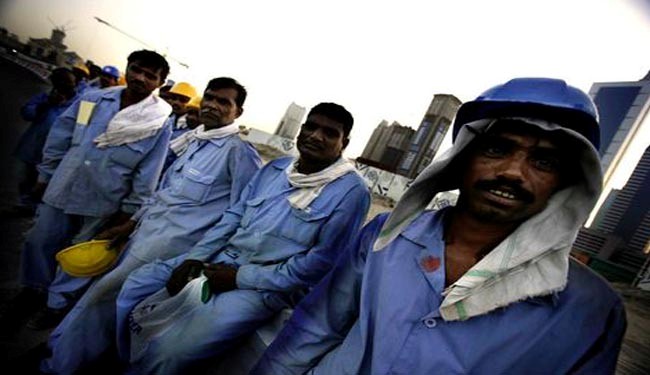
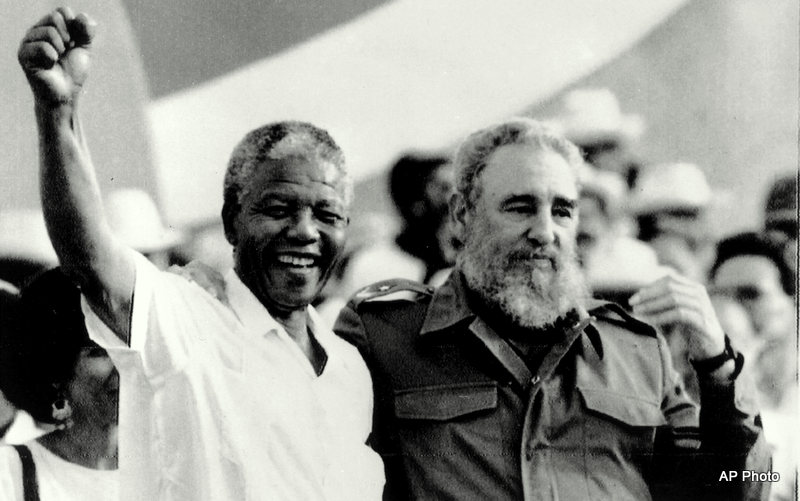
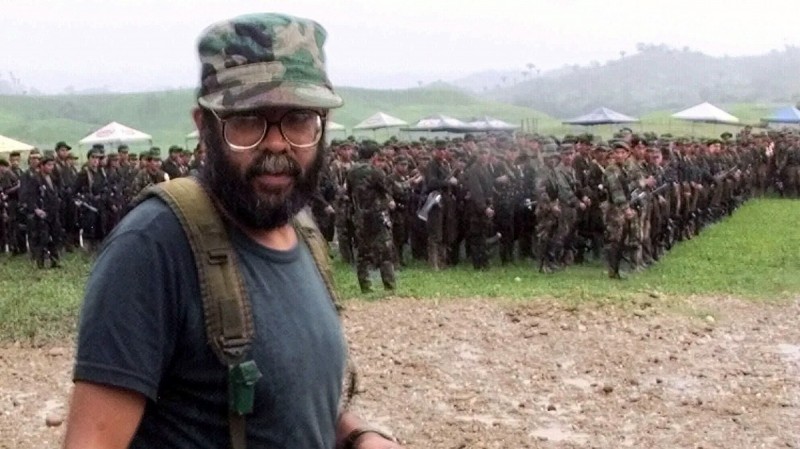
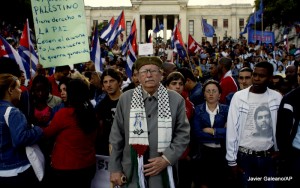
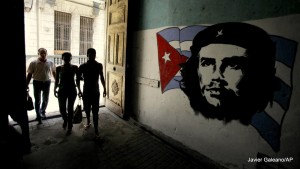 Those who misunderstand the methods and tactics of genuine revolutionaries portray Cuba as a country of bloodthirsty revolutionaries who spread violence throughout the continent. Cuba has supported progressive forces who, like the Cubans did in 1959, took up arms in self-defense against brutal and repressive autocracies. However, like all sensible forces advocating social justice, they would prefer a peaceful transition to a better world.
Those who misunderstand the methods and tactics of genuine revolutionaries portray Cuba as a country of bloodthirsty revolutionaries who spread violence throughout the continent. Cuba has supported progressive forces who, like the Cubans did in 1959, took up arms in self-defense against brutal and repressive autocracies. However, like all sensible forces advocating social justice, they would prefer a peaceful transition to a better world.



